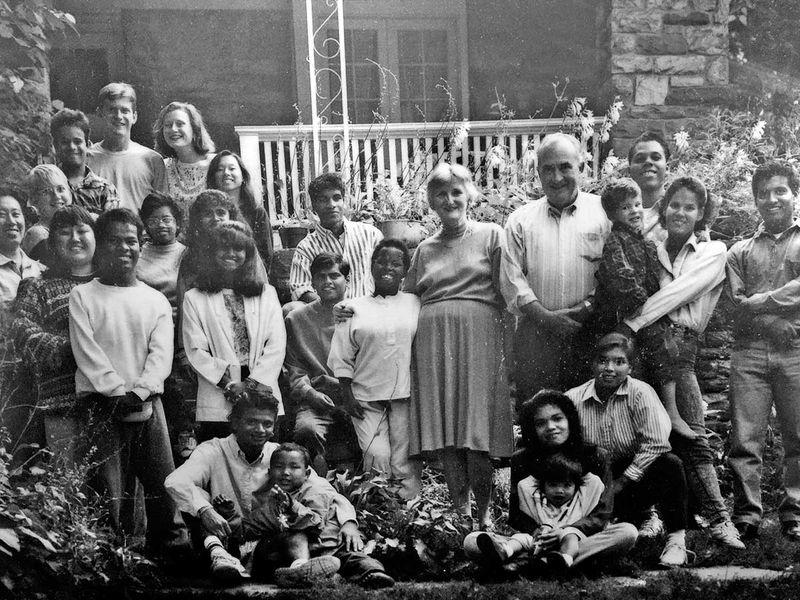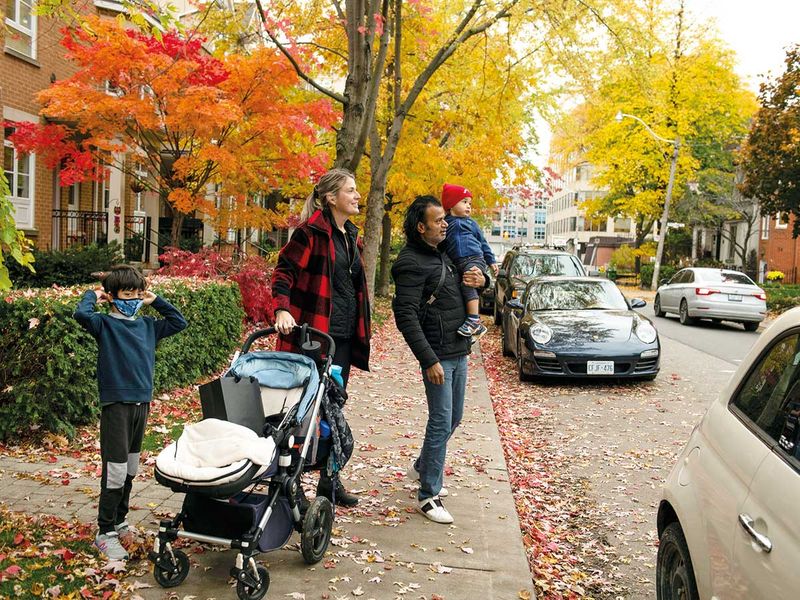Toronto: Sash Simpson made his name as a chef for Canada’s rich, preparing them chardonnay-poached lobster and $27 foie gras-smothered burgers.
But four decades ago, he was a street kid in southern India, eating out of garbage bins behind restaurants in Coimbatore, a textile hub in the state of Tamil Nadu.
When he was around 8 years old, staff members of an orphanage noticed him begging at a bus station. He was living in a nearby movie theatre, cleaning floors in return for a place to sleep. The orphanage workers persuaded him to come back with them, and that, in his telling, is when his life really began.
“It’s all timing. Either one second earlier, one second later, and they might have missed me,” said Simpson, who recently celebrated his 50th birthday, though he’s not sure of his age. “I’m a believer in miracles. It happened to me.”
One of Canada’s top chefs, Simpson opened his own restaurant last year, with all the luxury touches he could never have imagined 45 years ago: valet car service, four kinds of caviar, and vodka served with gold-encrusted ice.
The timing was terrible. Toronto’s restaurants have been among the worst hit in North America, losing about 80% of the reservations they had received in 2019, according to data collected by OpenTable, an online restaurant reservation service. They were shut for almost five months during the first wave of the coronavirus and then, after a two-month reprieve, ordered closed again Oct. 10.
“Everything I have is in this,” Simpson said on a recent October morning, sitting in a $600 gray tweed custom-made chair in his empty restaurant, looking over two dozen empty tables.
Early memories
Simpson’s memories of his childhood are a small collection of blurry mental snapshots: A shack in a slum by the train tracks was home. A father speaking in sign language and working in a tobacco factory. Two older siblings. Many long nights, jumping on and off trains. Only recently did he obtain his adoption file, which stated that his mother had “run off with a male friend” and that his brother had left him at the bus station. But Simpson has no recollection of that.

Image Credit: NYT
“I don’t know where I’m from in India exactly,” he said. “I call my house the place where they found me.”
The orphanage was founded by a small Canadian nonprofit organisation, Families for Children, to support and raise abandoned children. Most were adopted very young. The older ones stayed, attending school, until they could move out. Young Sash made it his mission to become the exception.
Every time the group’s founder, Sandra Simpson – whom he remembers as impossibly tall and blonde and revered in the place “like the president” – arrived at the orphanage, he tugged on her skirt and repeated a combination of “Mummy” and “Canada.”
“He pestered the life out of me to come to Canada,” Simpson, now 83, wrote in an email from Montreal, where she still runs Families for Children. “I told him I would look for a family, but we had nobody waiting for a boy that age. We decided to adopt Sashi into our family,” she said, using Sash’s legal name.
After five days of flying, Simpson arrived in Toronto during a snowstorm in 1979. His first memory of meeting his new family was the sight of a flickering box revealing a woman in red boots with a lasso. He was stunned. “I’d never seen television before,” he said. Sitting around a picnic table watching were “a million kids” – Sash’s new brothers and sisters.
The Simpsons later appeared on a television advertisement for Anacin, a pain medication, as “Canada’s largest family.”
By the time Sash Simpson’s formal adoption application was typed up in 1984, the family had 26 children: 20 of them adopted, four biological and another two fostered in the home. They came from countries ravaged by civil wars, natural disasters or poverty, as disparate as Ecuador and Somalia. Many were severely disabled.

Image Credit: NYT
They lived in a 22-room mansion in Forest Hill, one of Toronto’s wealthiest neighbourhoods, on loan from an investment banker and philanthropist. Sash got his first job delivering newspapers at age 12 so he could buy his own clothes separate from the household’s communal pile.
At 14, he began working as a dishwasher at the restaurant where his older sister Melanie worked as a waitress.
Full-time in kitchens
While he slid in seamlessly with his new family, school was not a good fit after so many years on the streets. He dropped out in 12th grade and went to work full-time in the kitchens of casual, family-style restaurants.
In 1993, he saw an ad for a job at North 44, a high-end restaurant in the city’s north end. Simpson had never eaten at a place like it, let alone cooked that kind of food.
He arrived at the kitchen door one evening and was sent away. Not only did he lack formal culinary training, but he was deep in his Michael Jackson phase – from the strings of hair hanging over his eyes to the single glove.
But he employed the same tactic that secured his adoption, returning two more times until the chef agreed to let him work there for three months, without pay.
Simpson worked his way from one kitchen station to the next, learning how to build a salad with colour and texture and simmer down a blond chicken stock overnight.
Executive chef
In 2003, Simpson was named executive chef, overseeing the kitchen and catering intimate events and galas.
He gained a reputation for impeccable service. He made the city’s rich feel special by remembering how many ice cubes they liked in their drink and how they preferred soup to salad.
At a catering event in 2008, he met Robin Pitcher, an event planner 11 years his junior. They have been married nine years.
Three days after his wife gave birth to their second son, Sawyer, Simpson opened Sash, to glowing reviews.
The past eight months, Simpson said, have been the most stressful of his life. He has borrowed money to cover the payroll of a bare-bones staff, even after government subsidies were collected. He spends his days in his empty restaurant, reaching out to clients to see if they are interested in ordering takeout or having their family parties catered.
Forty-odd years after eating from garbage cans, Simpson sees some irony in feeding the country’s ultrarich. But, as always, he’s focused on survival.
“There is no way this restaurant is closing,” he said. “I was a street kid. You have to fight for it.”



